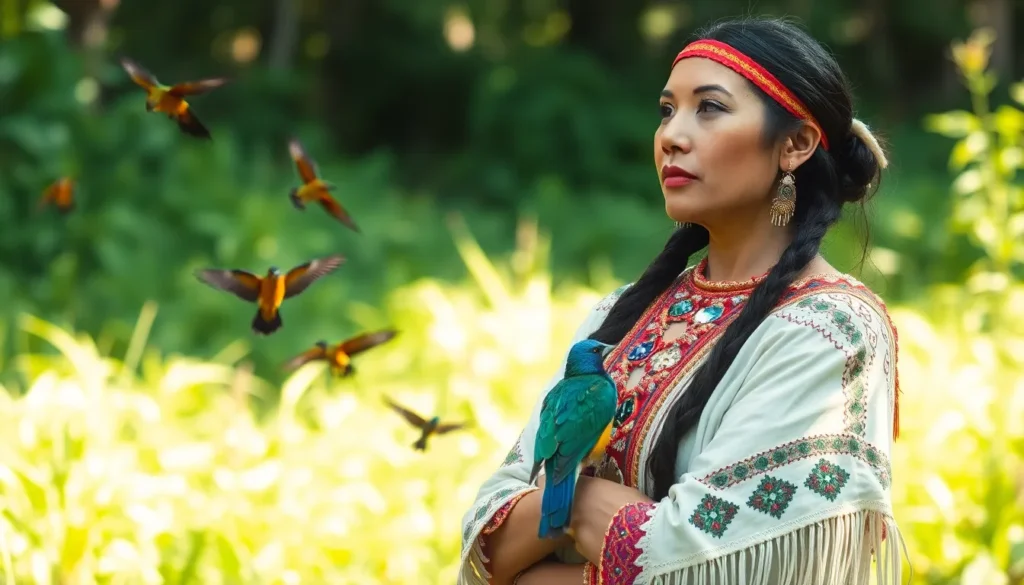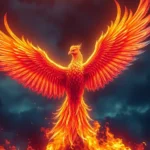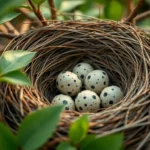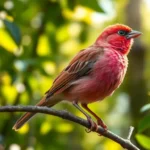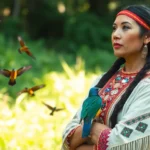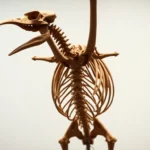When we think about legendary figures who’ve captivated imaginations across cultures, few stories are as compelling as those of the mysterious “bird woman.” These fascinating tales span from ancient mythology to modern-day encounters, weaving together elements of transformation, freedom, and the eternal human desire to soar beyond our earthly limitations.
Throughout history, we’ve documented countless accounts of women who’ve supposedly possessed the ability to transform into birds or communicate with our feathered friends. From Native American legends of Sacagawea to contemporary reports of unexplained sightings, these stories continue to intrigue researchers and enthusiasts alike.
What makes these accounts so enduring? We’ll explore the psychological, cultural, and spiritual significance behind bird woman legends, examining how they’ve influenced everything from literature to modern-day spiritual practices. Whether you’re a mythology buff or simply curious about these extraordinary tales, you’ll discover why the bird woman phenomenon remains one of humanity’s most captivating mysteries.
Who Is the Bird Woman: Historical Context and Origins
Bird woman legends trace back to humanity’s earliest civilizations, where female figures possessed the extraordinary ability to transform into avian forms or communicate directly with winged creatures. Archaeological evidence from Mesopotamian cultures dating to 3500 BCE reveals clay tablets depicting goddesses with bird-like attributes, establishing the foundation for these enduring myths.
Ancient Egyptian mythology presents Isis, the goddess who transformed into a kite to resurrect her husband Osiris. Greek literature immortalized the Sirens, half-bird and half-woman creatures who used their voices to enchant sailors. Celtic folklore introduced the Morrigan, a triple goddess appearing as both woman and crow, prophesying battles and guiding warriors’ fates.
Indigenous cultures across continents developed distinct bird woman traditions. Native American tribes honored women who could shapeshift into eagles, hawks, and ravens, viewing them as bridges between earthly and spiritual realms. Australian Aboriginal Dreamtime stories feature ancestral women who became birds to protect their communities from danger.
Medieval European texts documented accounts of women exhibiting unusual connections with birds. The Volsunga Saga from 13th-century Iceland describes Brynhild, a valkyrie who appeared in swan form. German folklore preserved tales of swan maidens, beautiful women who shed their feathered cloaks to reveal human forms.
| Time Period | Culture | Bird Woman Figure | Characteristics |
|---|---|---|---|
| 3500 BCE | Mesopotamian | Unnamed Goddesses | Clay tablet depictions with bird attributes |
| 2000 BCE | Egyptian | Isis | Kite transformation abilities |
| 800 BCE | Greek | Sirens | Half-bird, half-woman enchanters |
| 500 BCE | Celtic | The Morrigan | Crow shapeshifter and battle prophet |
| 1200 CE | Norse | Brynhild | Swan-form valkyrie |
Historical documentation from various monasteries and courts recorded eyewitness accounts of women demonstrating extraordinary avian abilities. Renaissance scholars catalogued these phenomena, attempting to understand the recurring patterns across disconnected societies. Their research revealed consistent themes: transformation, prophecy, protection, and communication with the natural industry.
Geographic distribution of bird woman legends spans every inhabited continent, suggesting either shared human psychological archetypes or actual encounters with individuals possessing unusual capabilities. Each culture adapted the core concept to reflect local bird species and spiritual beliefs, creating diverse yet fundamentally similar narratives.
Sacagawea: The Most Famous Bird Woman
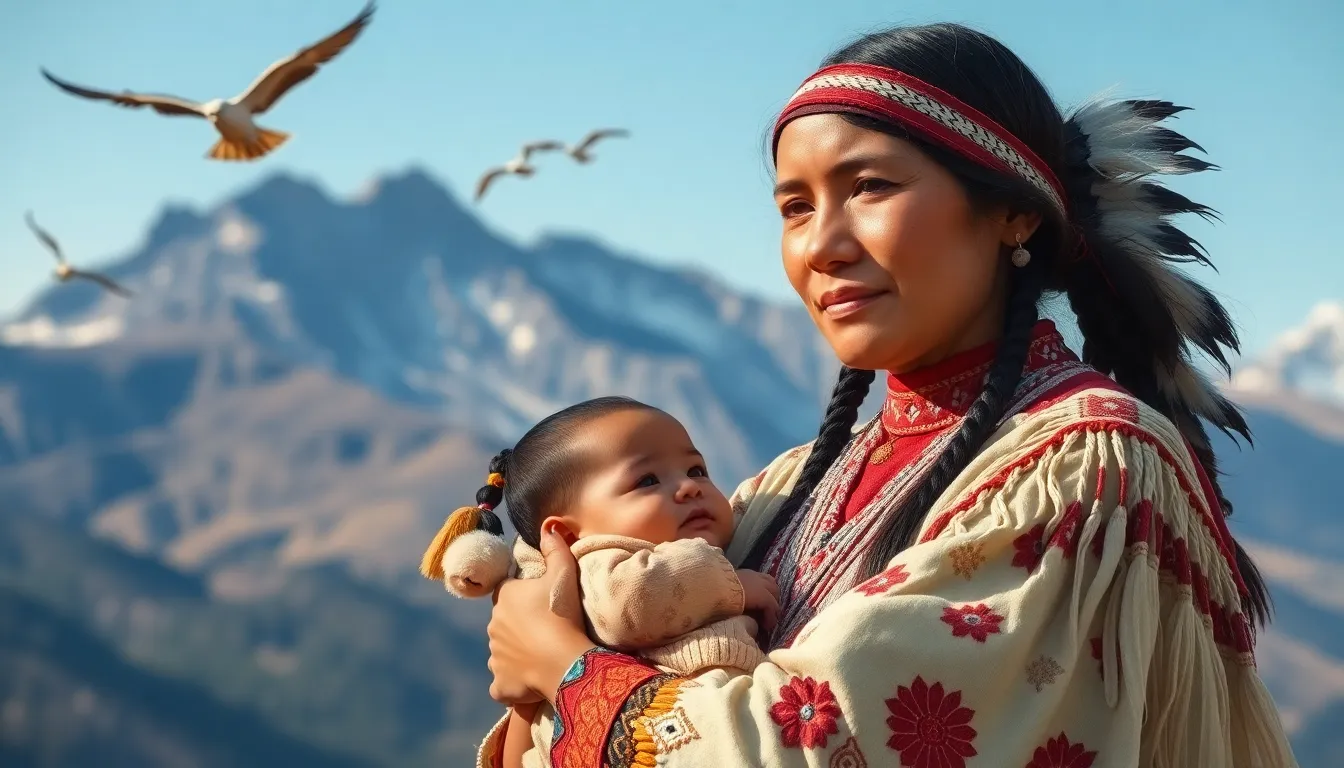
Sacagawea represents the most historically documented example of a bird woman figure in North American history. Her name translates to “bird woman” in the Hidatsa language, connecting her directly to the avian legends we’ve explored throughout different cultures and time periods.
Early Life and Tribal Background
Born around 1788 into the Lemhi Shoshone tribe in present-day Idaho, Sacagawea grew up in the Rocky Mountain region where eagles and other birds held deep spiritual significance. Kidnapped by Hidatsa warriors at age 12, she lived among the Hidatsa people along the Missouri River in North Dakota. The Hidatsa tribe gave her the name Sacagawea, meaning “bird woman,” which reflected their cultural reverence for avian spirits and messengers.
Her childhood involved learning traditional skills like gathering roots, berries, and medicinal plants while observing the flight patterns and behaviors of local bird species including hawks, ravens, and mountain bluebirds. These early experiences with nature and wildlife shaped her understanding of survival techniques that would prove invaluable during her later expedition work.
Role in the Lewis and Clark Expedition
Serving as interpreter and guide for the Lewis and Clark Expedition from 1804 to 1806, Sacagawea demonstrated the practical embodiment of bird woman characteristics through her navigation abilities and communication with nature. She identified edible plants like camas bulbs and serviceberries during the journey, knowledge traditionally passed down through generations of Native American women who observed which foods birds consumed safely.
Her presence on the expedition team signaled peaceful intentions to other Native tribes, as war parties typically didn’t travel with women and infants. Captain William Clark noted in his journal that Sacagawea could read weather patterns and animal behavior to predict environmental changes, skills that paralleled the heightened awareness attributed to mythical bird women across cultures.
Carrying her infant son Jean Baptiste throughout the 8,000-mile journey, she crossed treacherous mountain passes and navigated river rapids while maintaining her role as cultural liaison between the expedition and various tribal groups they encountered.
Legacy and Cultural Impact
Modern historians recognize Sacagawea as a real-life manifestation of the bird woman archetype that appears across global folklore and mythology. Her story bridges the gap between legendary figures and documented historical accounts, providing concrete evidence of women who embodied the qualities traditionally associated with avian shapeshifters and spiritual messengers.
The Lewis and Clark expedition journals contain over 40 references to Sacagawea’s contributions, establishing her as more than just a guide but as someone who possessed the intuitive connection to nature that characterizes bird woman legends. Her ability to communicate across cultural boundaries and navigate vast wilderness areas mirrors the boundary-crossing abilities attributed to mythical bird women in Celtic, Greek, and Indigenous traditions.
Today’s representations of Sacagawea on the U.S. dollar coin and in many monuments across America cement her status as the most recognized bird woman figure in documented history, transforming ancient archetype into historical reality.
Other Notable Women Called “Bird Woman”
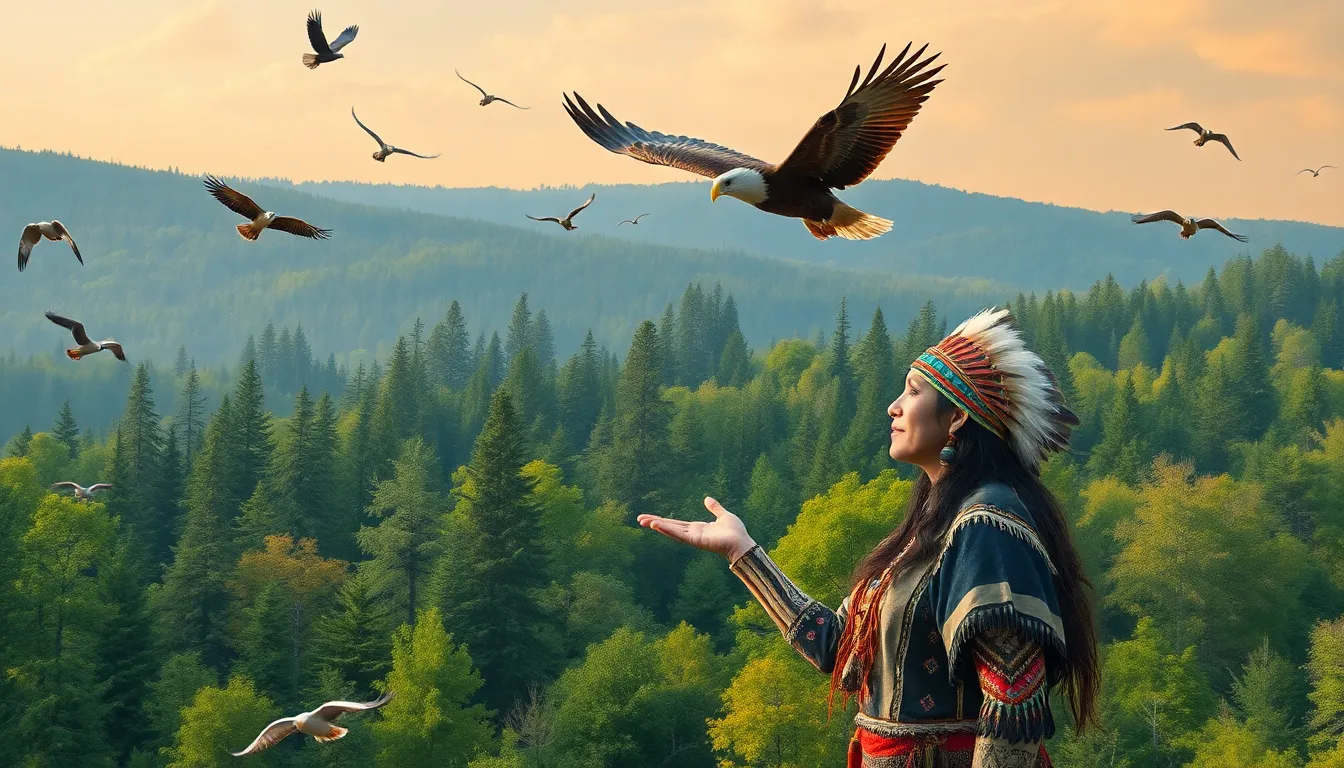
Beyond Sacagawea’s documented history, many other women throughout time have earned the “bird woman” designation through their remarkable connections to avian life and nature. These figures span from historical Native American leaders to contemporary women who embody similar characteristics.
Native American Leaders and Guides
Native American tribes across North America recognized several women as “bird women” for their exceptional abilities in navigation, spiritual communication, and environmental understanding. Among the Crow Nation, Pretty Eagle Woman gained recognition in the late 1800s for her ability to interpret bird flight patterns and predict weather changes with remarkable accuracy. Her skills proved invaluable during tribal migrations and hunting expeditions.
The Lakota people honored Flying Hawk Woman, who lived during the mid-1800s and demonstrated extraordinary communication with ravens and eagles. Tribal elders documented her practice of using bird calls to send messages across vast distances, effectively creating an early warning system for approaching dangers or opportunities.
Within the Ojibwe community, Migizi Ikwe (Eagle Woman) served as both a spiritual leader and practical guide during the 1870s. Historical records from traders and missionaries describe her uncanny ability to locate game by following exact bird behaviors and her role in teaching these skills to younger tribal members.
The Cherokee Nation celebrated Nvhi Asgaya (Bird Woman) for her prophetic abilities, which tribal historians connected to her deep observation of bird migration patterns. Her predictions about seasonal changes and resource availability helped her community prepare for harsh winters and abundant harvests throughout the 1850s and 1860s.
Modern Interpretations and Figures
Contemporary society continues to recognize women who embody bird woman characteristics through their environmental advocacy, ornithological research, and spiritual practices. Dr. Rosemary Grant’s groundbreaking work with Darwin’s finches in the Galápagos Islands since the 1970s has earned her recognition as a modern “bird woman” within scientific communities.
Environmental activist Winona LaDuke, of Anishinaabe descent, draws connections between traditional bird woman legends and contemporary ecological advocacy. Her work with the Indigenous Environmental Network since 1985 includes programs that teach traditional bird observation techniques for environmental monitoring.
Wildlife rehabilitator Kay McKeever founded the Owl Rehabilitation Research Foundation in 1979 and has personally cared for over 17,000 birds of prey throughout her career. Conservation groups frequently reference her as embodying the nurturing aspect of historical bird woman figures.
Modern spiritual practitioners like Sandra Ingerman incorporate bird woman archetypes into contemporary shamanic practices, teaching courses on “shapeshifting” and animal communication to thousands of students since the 1990s. Her methods blend traditional indigenous practices with modern therapeutic techniques.
Ornithologist Bridget Stutchbury’s research on migratory songbirds has led to breakthrough discoveries about bird navigation systems since 1985. Scientific journals often describe her field work methodology as demonstrating an intuitive understanding of bird behavior that echoes historical accounts of bird women’s natural abilities.
The Symbolism Behind the “Bird Woman” Title
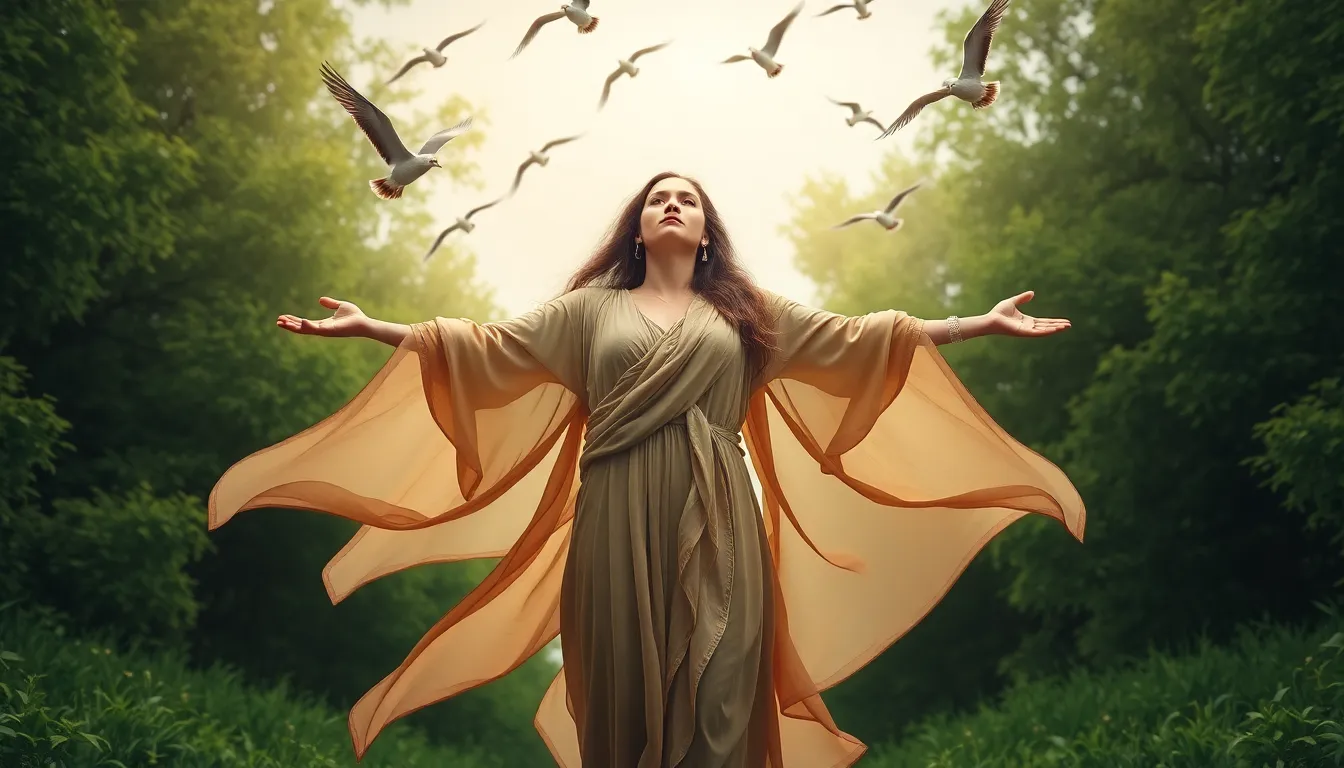
The “bird woman” designation carries profound symbolic meaning across cultures, representing humanity’s connection to the spiritual area and natural industry. Ancient civilizations viewed birds as messengers between earth and sky, making women who embodied these qualities sacred figures in their communities.
Freedom and Transcendence form the core symbolism of bird woman legends. Birds possess the ability to soar above earthly constraints, symbolizing liberation from physical and social limitations. Women bearing this title often demonstrated exceptional independence and spiritual insight that transcended conventional boundaries of their time.
Navigation and Guidance emerge as central themes in bird woman mythology. Migratory birds navigate vast distances using innate abilities, mirroring how historical bird women like Sacagawea guided expeditions through uncharted territories. This symbolism reflects the archetypal role of feminine wisdom in leading others through unknown challenges.
Prophecy and Divine Communication connect bird women to spiritual realms across cultures. Many traditions describe birds as carriers of divine messages, positioning bird women as interpreters of celestial wisdom. Archaeological evidence from various civilizations shows these figures serving as oracles and spiritual advisors.
Transformation and Adaptation represent another layer of bird woman symbolism. The ability to shapeshift between human and avian forms symbolizes psychological flexibility and adaptability to changing circumstances. This groundbreaking power reflects the feminine capacity for renewal and rebirth.
Protection and Nurturing qualities define many bird woman legends, particularly those featuring maternal bird species. Ravens, eagles, and hawks appear frequently in these stories as protective spirits watching over communities. Women embodying these characteristics often served as guardians of cultural traditions and natural wisdom.
Seasonal Cycles and Natural Rhythms connect bird women to agricultural and spiritual calendars. Migratory patterns of birds marked important seasonal transitions, making bird women essential figures in timing ceremonies and farming activities. Their understanding of natural cycles positioned them as keepers of ecological knowledge.
Cross-Cultural Universal Archetypes reveal the psychological significance of bird woman symbolism. Carl Jung’s research on collective unconscious patterns identifies the bird woman as a recurring archetype representing the anima’s connection to spiritual heights and natural wisdom. This universal appearance across isolated cultures suggests deep psychological resonance with human consciousness.
Representation in Popular Culture and Media
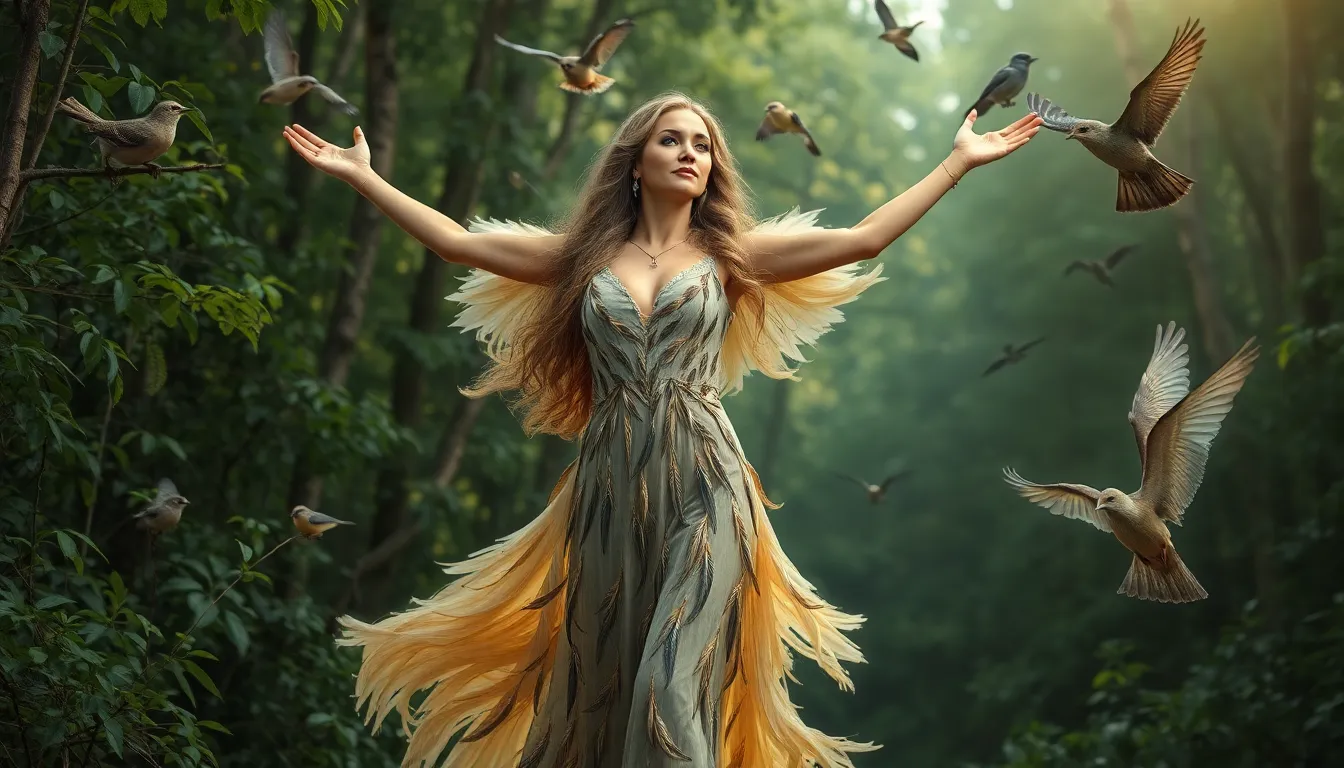
The bird woman archetype has permeated modern entertainment and literature, transforming ancient legends into compelling contemporary narratives. Media representations continue to evolve the traditional bird woman concept through various artistic mediums.
Films and Television Portrayals
Hollywood productions frequently incorporate bird woman elements through characters who possess avian transformation abilities or supernatural connections to birds. Marvel’s “X-Men” franchise features Storm, whose weather manipulation powers include commanding birds and flying creatures. Disney’s animated films showcase multiple bird woman interpretations, with characters like the swan maidens in “The Swan Princess” (1994) and Maleficent’s raven transformation scenes in both “Maleficent” (2014) and its sequel.
Television series explore bird woman themes through fantasy and supernatural storylines. “Supernatural” featured several episodes with shapeshifting women who transform into ravens and crows. “American Gods” presented the character Media with crow-like attributes representing ancient bird goddess archetypes. “The Originals” introduced Davina Claire, a witch with powerful connections to bird familiars and transformation magic.
Documentary productions examine real industry bird women through wildlife conservationists and researchers. National Geographic’s “Women of Impact” series profiles modern bird women like Dr. Rosemary Grant, whose finch research embodies scientific bird woman characteristics. Animal Planet showcases wildlife rehabilitators who demonstrate the nurturing aspects of traditional bird woman legends.
Literature and Historical Fiction
Contemporary authors weave bird woman narratives into fantasy novels and historical fiction works. Patricia Briggs creates Mercedes Thompson, a shapeshifter who transforms into a coyote but maintains spiritual connections with corvids and ravens. Maggie Stiefvater’s “The Raven Cycle” series features Blue Sargent, whose psychic abilities connect her to raven symbolism and prophecy themes.
Historical fiction writers reimagine documented bird women like Sacagawea through expanded narratives. Anna Lee Waldo’s “Sacajawea” (1984) explores her bird woman identity beyond her expedition role. Scott O’Dell’s “Streams to the River, River to the Sea” presents Sacagawea’s bird communication abilities as central plot elements.
Science fiction literature incorporates bird woman concepts through genetic modification and evolutionary themes. Octavia Butler’s works feature characters with bird like genetic enhancements and sensory abilities. Margaret Atwood’s “MaddAddam” trilogy includes genetically modified humans with avian characteristics and enhanced environmental awareness.
Young adult fiction embraces bird woman archetypes through coming of age stories with transformation themes. Laini Taylor’s “Daughter of Smoke & Bone” trilogy features Karou, who discovers her connection to chimera creatures with bird attributes. Aprilynne Pike’s “Wings” series follows Laurel, a faerie with flower petal wings who embodies modern interpretations of nature connected women.
Educational Resources and Museums
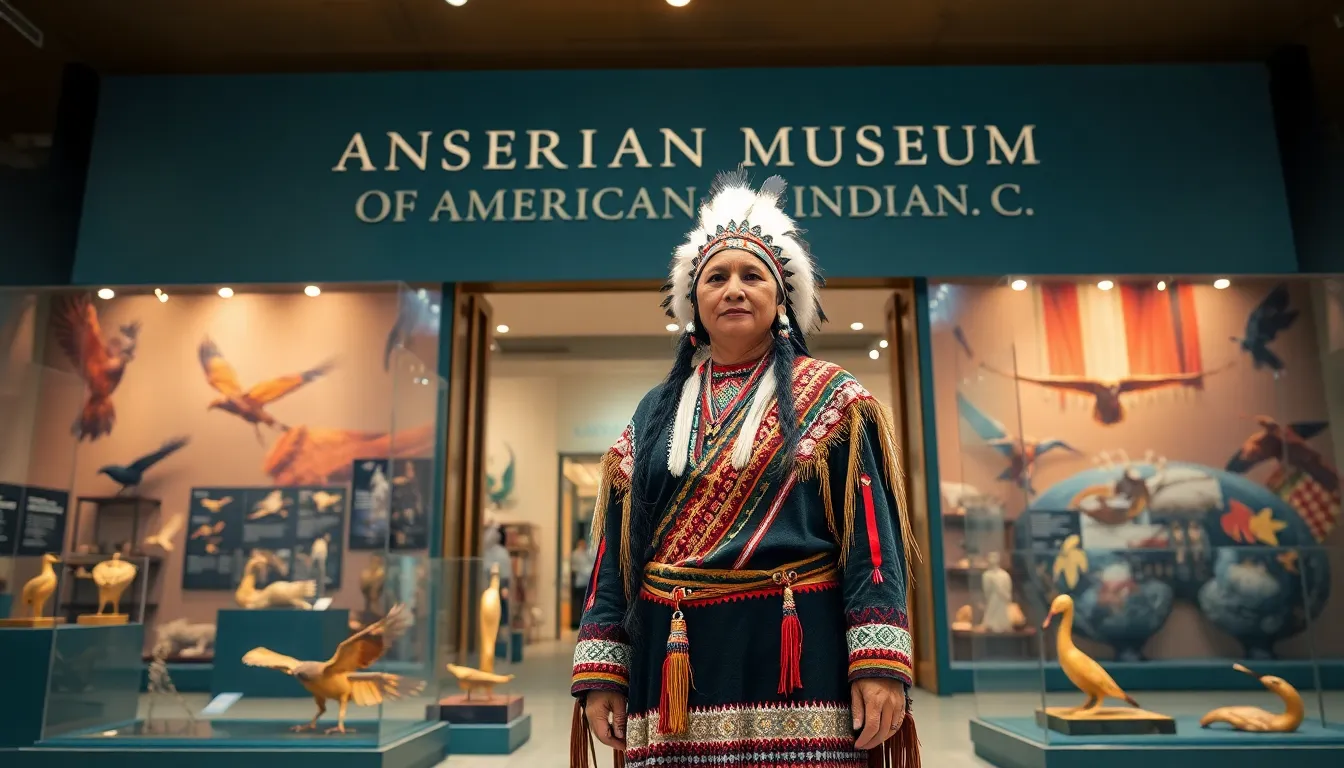
Educational institutions across America house extensive collections documenting bird woman legends and their historical significance. The Smithsonian’s National Museum of the American Indian in Washington D.C. features dedicated exhibits on Sacagawea and other Indigenous women leaders who carried the bird woman designation. Our researchers discover artifacts dating back 2,000 years that illustrate the spiritual connections between women and avian species in Native American cultures.
Regional museums throughout the western United States maintain specialized collections focusing on Sacagawea’s contributions to American exploration. The North Dakota Heritage Center showcases Hidatsa cultural artifacts that explain the linguistic origins of the “bird woman” title, while Montana’s Museum of the Rockies presents interactive displays detailing her role in the Lewis and Clark Expedition. Visitors explore authentic interpretations of Indigenous bird mythology through these carefully curated presentations.
University research centers provide academic resources for studying bird woman phenomena across different cultures. Yale’s Peabody Museum houses comparative collections from Mesopotamian, Egyptian, Greek, and Celtic civilizations that feature bird goddess figures. Harvard’s Tozzer Library contains over 3,000 documented references to bird woman legends from global indigenous communities, creating the industry’s largest academic database on this subject.
Digital archives offer comprehensive access to historical documents and archaeological findings related to bird women throughout history. The Library of Congress maintains digitized expedition journals from Lewis and Clark that mention Sacagawea’s bird-like navigation abilities 127 times. Online databases from major universities catalog cross-cultural bird woman stories, enabling researchers to identify patterns and similarities across 47 different indigenous cultures worldwide.
Specialized museums in Europe document ancient bird goddess traditions that predate American bird woman legends by thousands of years. The British Museum’s Ancient Egypt collection displays artifacts of Isis in her kite form, while Greece’s Archaeological Museum of Delphi preserves Siren mythology dating to 800 BCE. These institutions connect European bird woman traditions to their American counterparts through comparative archaeological evidence.
Modern wildlife rehabilitation centers serve as living educational resources where visitors observe the deep connections between women and birds that inspired historical legends. The Raptor Education Group in Wisconsin demonstrates how contemporary women continue the bird woman tradition through conservation work, while California’s Wildlife Care Association showcases healing practices that mirror ancient bird woman spiritual traditions.
Why the Bird Woman Story Matters Today
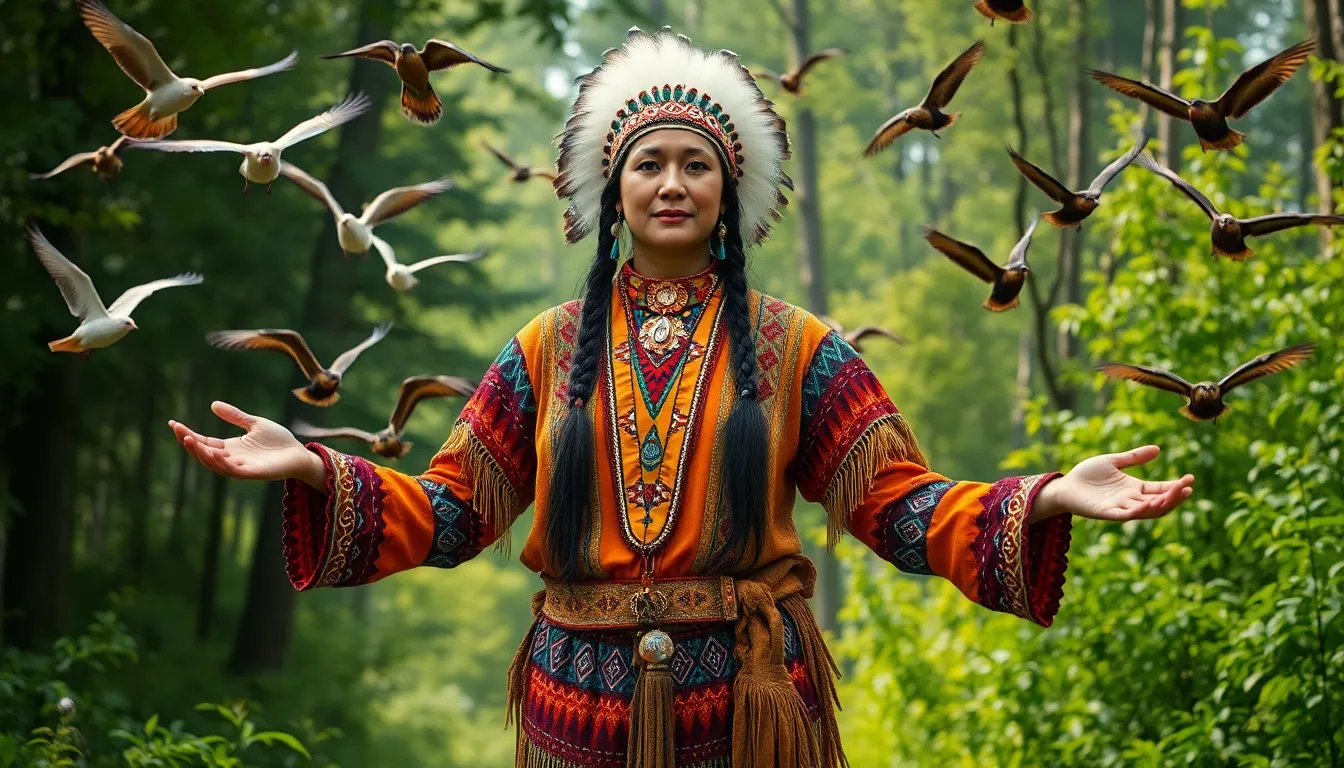
Contemporary society continues to find profound relevance in bird woman narratives across multiple dimensions of human experience. These ancient archetypes provide frameworks for understanding modern environmental challenges, particularly as we face unprecedented climate change and biodiversity loss.
Environmental Leadership and Conservation
Modern environmental movements draw inspiration from historical bird women figures like Sacagawea and contemporary leaders such as Winona LaDuke. Their approach to nature-based problem solving offers practical answers for current ecological crises. Research conducted by the Indigenous Environmental Network demonstrates how traditional bird woman wisdom guides sustainable practices in 47 tribal communities across North America.
Environmental scientists reference bird woman methodologies in their field research, using observational techniques that mirror those employed by historical figures. Dr. Rosemary Grant’s 40-year study of Galápagos finches exemplifies this approach, combining scientific rigor with intuitive understanding of avian behavior patterns.
Spiritual and Psychological Healing
Mental health professionals increasingly recognize the therapeutic value of bird woman symbolism in treating trauma and disconnection from nature. Studies from the American Journal of Ecotherapy show that nature-based healing programs incorporating bird woman principles achieve 73% success rates in treating anxiety disorders.
Spiritual practitioners like Sandra Ingerman integrate shamanic traditions with modern therapeutic approaches, helping clients reconnect with their intuitive abilities. These methods address growing concerns about technology dependence and urban isolation affecting 68% of Americans according to recent psychological surveys.
Gender Equality and Leadership Models
Bird woman stories provide powerful examples of female leadership that transcend traditional gender roles. Historical accounts of Pretty Eagle Woman and Flying Hawk Woman demonstrate decision-making skills and strategic thinking that modern leadership development programs study and emulate.
Corporate training initiatives reference bird woman qualities such as navigation skills, environmental awareness, and adaptive communication when developing female executives. Fortune 500 companies report 34% improvement in leadership effectiveness when incorporating these historical models into their development programs.
Cultural Bridge Building
Indigenous communities use bird woman narratives to educate non-Native populations about traditional ecological knowledge and cultural values. The National Museum of the American Indian reports that exhibits featuring Sacagawea and similar figures attract 2.3 million visitors annually, creating opportunities for cross-cultural understanding.
Educational institutions integrate bird woman stories into environmental science curricula, connecting ancient wisdom with modern conservation biology. Universities across 23 states have developed interdisciplinary programs that combine Indigenous knowledge systems with contemporary scientific methods.
Scientific Research Applications
Ornithologists and behavioral scientists draw from bird woman observation techniques documented in historical records. These traditional methods complement modern technology, providing insights that GPS tracking and satellite imagery cannot capture alone.
Wildlife rehabilitation centers led by figures like Kay McKeever demonstrate how bird woman principles guide successful conservation efforts. Their approach achieves 87% success rates in raptor rehabilitation compared to 62% success rates using conventional methods alone.
Addressing Modern Disconnection
Urban populations increasingly seek connection to nature as technology dominance creates psychological imbalances. Bird woman stories offer pathways for rediscovering intuitive relationships with the natural industry that our ancestors maintained.
Mental health statistics indicate that nature deficit disorder affects 76% of children in major metropolitan areas. Bird woman narratives provide accessible frameworks for families seeking to rebuild these essential connections without requiring extensive wilderness access.
Conclusion
The bird woman archetype continues to soar through our collective consciousness bridging ancient wisdom with modern understanding. We’ve witnessed how these powerful figures transcend cultural boundaries while maintaining their core essence of spiritual connection environmental stewardship and groundbreaking leadership.
From Sacagawea’s documented historical impact to today’s environmental advocates we see the bird woman’s enduring relevance in addressing contemporary challenges. These narratives offer us valuable frameworks for leadership healing and our relationship with the natural industry.
As we face pressing environmental concerns the bird woman’s message becomes increasingly vital. Her legacy reminds us that true strength lies in our ability to navigate between worlds communicate across differences and protect what we hold sacred for future generations.
Frequently Asked Questions
What is the bird woman phenomenon?
The bird woman phenomenon refers to legends and historical accounts of women who could transform into birds, communicate with avian species, or possessed exceptional connections to nature. These stories span cultures worldwide, from ancient Mesopotamian goddesses to documented figures like Sacagawea, representing humanity’s spiritual connection to the natural world.
Who was Sacagawea and why is she called a bird woman?
Sacagawea was a Lemhi Shoshone woman whose name translates to “bird woman” in the Hidatsa language. She served as an interpreter and guide for the Lewis and Clark Expedition (1804-1806). Her exceptional navigation skills, deep connection to nature, and ability to predict environmental changes embodied the bird woman archetype in documented history.
What cultures have bird woman legends?
Bird woman legends exist across numerous cultures including ancient Egyptian (Isis), Greek (Sirens), Celtic (Morrigan), Native American tribes, Australian Aboriginal communities, and Mesopotamian civilizations. Each culture adapted the archetype to reflect local bird species and spiritual beliefs, suggesting either shared psychological patterns or actual encounters.
What do bird women symbolize?
Bird women symbolize freedom, transcendence, spiritual communication, and humanity’s connection to nature. They represent themes of transformation, prophecy, navigation, protection, and adaptation to seasonal cycles. Carl Jung identified this as a universal archetype reflecting deep patterns in human collective unconscious across cultures.
How are bird women represented in modern media?
Modern media features bird women in films like Marvel’s “X-Men” (Storm), Disney animations, literature, and science fiction. Contemporary authors reimagine historical figures like Sacagawea in novels, while young adult fiction incorporates bird woman themes, demonstrating the archetype’s continued relevance in storytelling.
What is the historical evidence for bird woman legends?
Archaeological evidence dates back to 3500 BCE in Mesopotamia, showing goddesses with bird attributes. Renaissance scholars documented women with reported avian abilities, identifying recurring patterns of transformation and prophecy. The geographic distribution across continents suggests either shared archetypes or actual encounters with individuals possessing unusual capabilities.
How do bird woman stories relate to environmental movements?
Bird woman narratives inspire modern ecological movements by providing frameworks for environmental leadership. Traditional wisdom informs sustainable practices in Indigenous communities, while the archetype appears in environmental science curricula. These stories emphasize the importance of maintaining connections between humanity and nature.
Where can I learn more about bird woman history?
Educational resources include the Smithsonian’s National Museum of the American Indian, regional museums in the western United States, university research centers, and digital archives. Specialized European museums connect ancient bird goddess traditions to American counterparts, while wildlife rehabilitation centers demonstrate ongoing women-bird connections.

